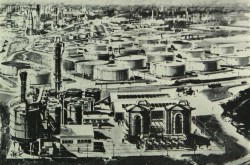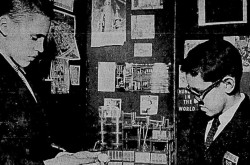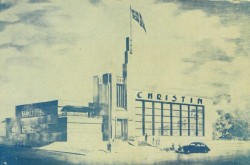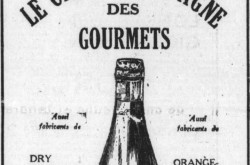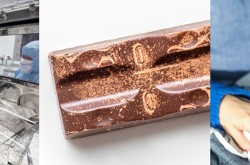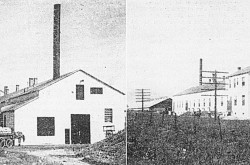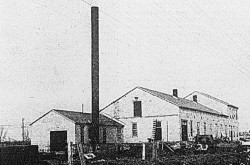The Waterloo Pump fills glasses worldwide
This article was originally written and submitted as part of a Canada 150 Project, the Innovation Storybook, to crowdsource stories of Canadian innovation with partners across Canada. The content has since been migrated to Ingenium’s Channel, a digital hub featuring curated content related to science, technology and innovation.
Many developing nations still suffer from a lack of clean drinking water but an invention in 1978 lessened this problem to some degree. Professors Alan Plumtree and Alfred Rudin designed a hand operated water pump at the University of Waterloo, called the Waterloo Pump. The project was requested of them by the International Development Research Centre and it took them only six months to complete their design.
They got their inspiration from the Mennonites of southwestern Ontario, and the simplicity of the pumps they used in their communities. Plumtree and Rudin sought out to create a pump that was versatile, intuitive and easily repaired.
The Waterloo Pump simulated a piston much like that of a combustion engine. Standard pumps at the time were made of steel or iron, which is rather expensive to smelt. These pumps would rust easily and break down within a year. Given how complex the machinery is they’re really difficult and expensive to repair as well.
Plumtree and Rodin’s solution to these detrimental problems was to substitute metal for plastic, especially since many developing countries have very few steel foundries. Molding technology, however, is common and relatively inexpensive. So the team settled on the use of polyvinylchloride (PVC) plastic since it’s inexpensive, non-corrosive and could easily be produced within the country that needs the pump.
The cherry on top here is that its simple design means it’s easy to fix and parts can be glued together rather welded. Some countries found ways to circumvent the need for certain new parts. In Sri Lanka, for example, people simply use a strip of leather to replace certain plastic rings when they wear out. But it doesn’t even wear out that quickly. While standard metal pumps can last up to a year without a repair the Waterloo Pump has a lifespan of eight years.
There are individual adaptations by country, a prime example being Malawi. Over there the white pump was being gnawed into pieces by hyenas that thought they saw a free dinner of bones. The PVC plastic used for the pumps in Malawi is now black, to avoid any more embarrassing moments for local hyenas.
The Waterloo Pump not only remains relevant but is also still being iterated on. The most popular of these redesigns is the UNIMADE model, created by the University of Malaya, and is used in 13 countries. This Canadian machinery was merely a pipe dream for many in the 1970’s but Plumtree and Rudin’s design is now a part of everyday life for millions and provides clean water in several developing nations.
By: Jassi Bedi
Transcript
00:14
Ottawa asks us
00:16
to design a pump for the third world.
00:19
International Development said "Lightweight, rustproof.
00:21
"So simple you could fix it with a rubber band
00:23
and a bent nail."
00:24
I said, "With today's technology, no problem."
00:28
Ha!
00:29
Well, maybe today's technology is the problem.
00:33
So?
00:40
It was in our own backyard!
00:42
Mennonite resourcefulness.
00:51
She says, "You Canadians have such modern ideas."
00:54
Tell her it's really a very old idea.






